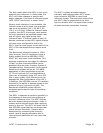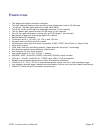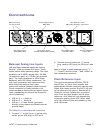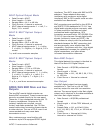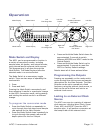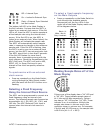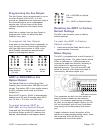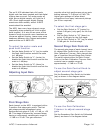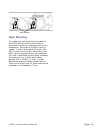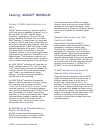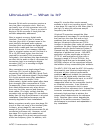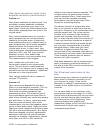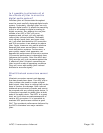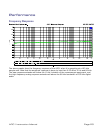
ADC1 Instruction Manual Page 13
Programming the Aux Output
The Aux Output can be programmed to mirror
the Main Outputs (bit for bit), or it can
provide an independent low-resolution copy of
the converted signal, at an independent
sample rate. Column three of the Mode
Indicator displays the Aux Output mode
setting.
Note that no matter how the Aux Output is
programmed it does not affect the Main
Outputs in any way.
To program the Aux Output
Press down on the Mode Switch repeatedly to
cycle through the Aux Output mode settings
until the right-hand column of LEDs in the
Mode Display matches the desired mode
based on the diagrams below.
Exact Copy of
Main Outputs
(24-bit)
44.1 kHz
16-bit
48 kHz
16-bit
ADAT or AES/EBU on the
Optical Output
The Optical Output (on of the three Main
Outputs) can provide either AES/EBU or ADAT
format. The bottom LED in the middle column
of LEDs indicates what mode the Optical
Output is in.
When ADAT is active, S/MUX is automatically
enabled at all 2X and 4X sample rates (88.2
kHz, 96 kHz, 176.4 kHz, and 192 kHz).
To select between ADAT or
AES/EBU on the Optical Output
Press and hold the Mode Switch down until
the Optical Output mode LED matches the
desired mode based on the diagram below.
Off = AES/EBU on Optical
Output
On – ADAT on Optical Output
Resetting the ADC1 to Factory
Default Settings
The ADC1 can be easily reset to Factory
Default settings.
To reset the ADC1 to Factory
Default settings
• Press and hold the Mode Switch up for
approximately 3 seconds.
Meter Display
The ADC1 is equipped with a multi-function 9-
segment LED meter. The Meter Switch selects
either a 6 dB/step or 1 dB/step scale and
controls the peak-hold function. Metering is
fully-digital and is post conversion for
absolute accuracy. The units are dBFS (dB
below the level of a full-scale sine wave, or
more simply, dB below digital clip).
Meter Switch and Meters
Time constants are built into the meters so
that all transient peaks can be observed
easily. If a transient peak having a duration
as short as one digital sample occurs, an LED
will be illuminated, and will stay illuminated
long enough to be observed by the human
eye.
A peak indication mimics the action of the
needle on a peak-reading analog meter, while
the remaining LEDs will follow the
instantaneous level of the audio.



